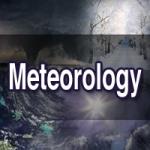|
This section contains 1,999 words (approx. 7 pages at 300 words per page) |

|
Overview
Eighteenth-century meteorological study in Europe marked interest in methodical observations on a larger scale, providing a more systematic and cumulative database to formulate early theories of atmospheric movement and phenomena. With innovative instrumental designs, laboratory experiment and resulting new fundamental laws of physics helped the progress of meteorology into field application. Expanding theory included further delving into the general circulation of the atmosphere, the nature of lightning, and some delineation of the basic physical extension of atmospheric parameters or indicators (pressure, temperature, and humidity). Perhaps the most significant and fundamental advance marking eighteenth-century meteorology was early attempts at mathematical correlation through the study of fluid flow.
Background
While seventeenth-century interest in the atmosphere had mainly dealt with basic conception of atmospheric parameters and devising experimental instrumentation to record these parameters, methodical data gathering had not spread widely enough. An...
|
This section contains 1,999 words (approx. 7 pages at 300 words per page) |

|


